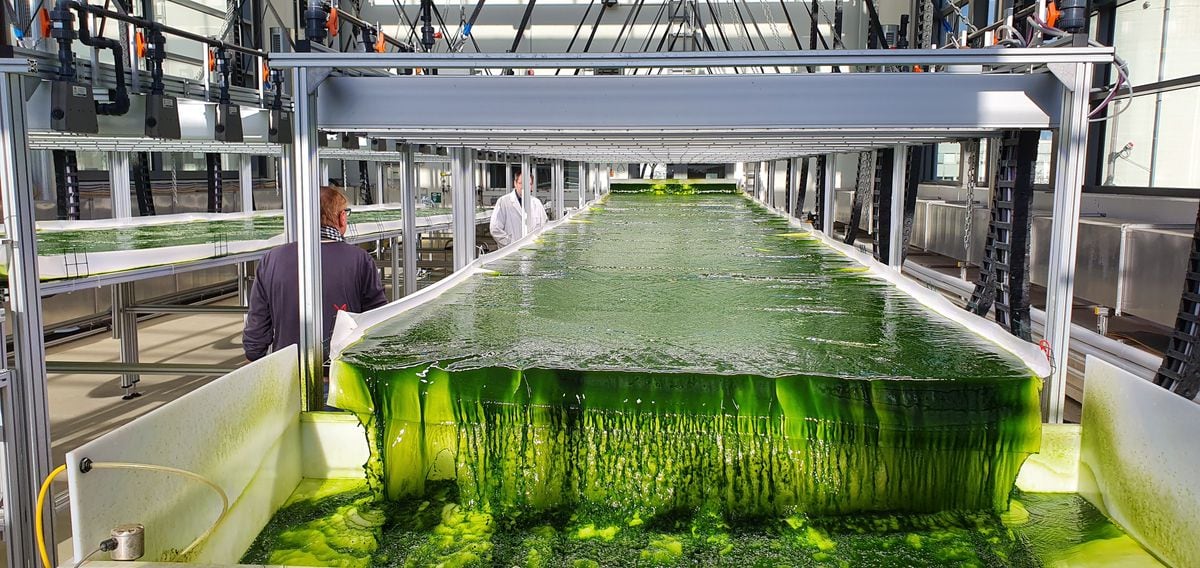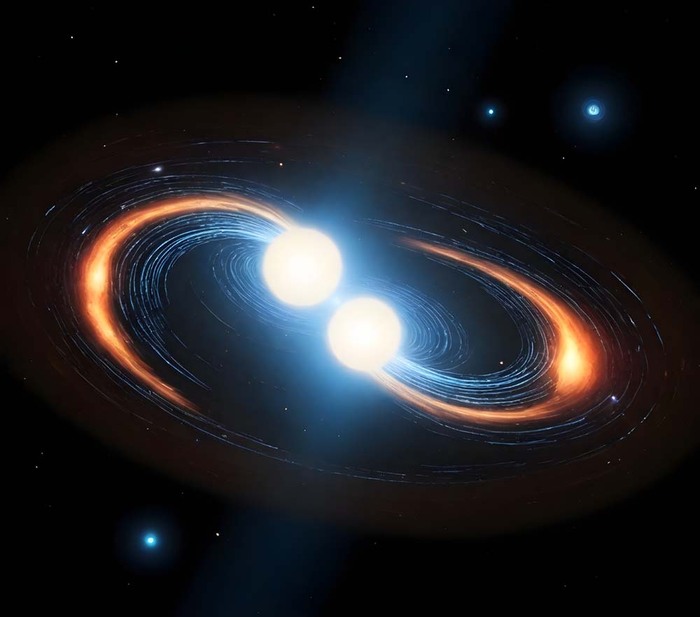The experiments were carried out in one of the largest tanks dedicated to bioreaction, with water from a mine.Thomas Brück and Andreas Heddergott, Technical University of Munich
Twelve bacteria collected from different parts of the planet are being investigated for having a capacity that costs humans a lot of science and a lot of work: recovering rare earths.
These minerals are rare for their special properties, which make them essential for a wide range of advanced technologies.
They are also very relevant in current geopolitics, since China and, to a lesser extent, the United States form an almost duopoly of their extraction.
So in Europe it is urgent to recover them from the products and processes in which they are involved.
And, for this, German scientists have identified these dozen microorganisms, some of them extremophiles, which have the rare ability to be attracted to rare earths by joining them.
Ignored for almost two centuries, the rare earths are a group of elements that have been cornered on the periodic table.
They are metals, but rare.
In addition to scandium and yttrium, there are the 15 members of the lanthanide group (such as lanthanum, cerium, or neodymium).
Although they are not abundant in nature (their concentration in the earth's crust is low, ranging from 0.5 to 67 parts per million), their name of rare actually comes from having a special chemical structure that is very similar between them.
Furthermore, they only appear in the form of oxides.
A series of properties, such as its high capacity as a conductor and its magnetism, have made it indispensable in the last three decades.
Without them,
Some more data is needed to understand the interest that rare earths arouse among scientists, but even more among the heads of large technology companies and politicians.
Iron was the basis of the Industrial Revolution, but it is like water, as vital as it is cheap: a kilogram barely costs 20 cents.
However, a kilo of neodymium oxide is around 200 euros and the same amount of terbium oxide can exceed 3,800 euros.
In addition to being expensive, rare earths appear concentrated in a number of countries.
According to data from the United States Geological Survey, more than half of the 280,000 tons that were torn from the Earth in 2021 were obtained by China.
A look at the reserves shows an even more worrisome geopolitical future: of the estimated 120 million tons,
almost 40% are in Chinese territory and 60% are divided between Russia, Vietnam and Brazil.
On European soil, although the Swedish chemist Carl Gustaf Mosander was the one who discovered the first three elements (lanthanum, erbium and terbium) and there is a lanthanide that bears the name of Europe, europium, there are hardly any rare earths.
The scarcity of own production, which contrasts with the intensive use of these elements by Europeans, forces them to be recycled, to recover them from where they are to return them to the circuit.
But, to complicate matters, metal recovery was traditionally done through energy-intensive and highly polluting chemical processes, such as the use of acids.
Hence the interest in projects such as the one led by a group of scientists from the Technical University of Munich (Germany), who have turned their gaze towards cyanobacteria, a phylum of bacteria that carry out photosynthesis.
“Cyanobacteria do not feed on metals.
What is produced is a union of these to the cell surface of those”
Thomas Brück, Head of the Algaetec Center at the Technical University of Munich
Bacteria are already used to treat wastewater and even oil spills, but while these are nourished or obtain energy from the material present in the liquid, in the case of cyanobacteria and rare earths there is an inevitable attraction.
This is explained by Thomas Brück, head of the Algaetec Center of the German university and senior author of the experiments.
“Cyanobacteria do not feed on metals.
What is produced is a union of these to the cell surface of those”.
It is not that they digest the metal, it is that ions (negatively or positively charged atoms of an element) bind to the sugars present in the cell wall of the bacteria.
In this sense, it is a chemical attraction, passive and almost automatic.
“If we apply the right reaction conditions, the binding can be reversed.
Therefore,
That was the theory they wanted to test.
Although some previous experiments had been done, they selected a dozen cyanobacteria, most of them extremophiles, to see how much rare earth they attracted.
Most of these microorganisms were unknown to science until a few years ago, and some are not yet fully classified.
Some bacteria come from the Namibian desert, one of the driest in the world.
Others must be sought in salty lakes rich in natron, such as Lake Chad, also in Africa, polluted torrents from the United States or samples from the water used in the exploitation of a Swiss mine.
One of the peculiarities of cyanobacteria is that they are a bacterial phylum characterized by having chlorophyll and carrying out photosynthesis.Thomas Brück and Andreas Heddergott, Technical University of Munich
According to the results of their experiments, published in the specialized journal
Frontiers in Bioengineering and Biotechnology
, all the cyanobacteria showed a greater or lesser ability to bind metals.
But they kept the five best ones to carry out new tests with four of the rare earths (lanthanum, cerium, neodymium and terbium) in a huge tank full of water from that mining operation.
They achieved levels of efficiency they had not expected: for example, cultures of
Calothrix brevissima
, recovered from a Japanese lake 50 years ago, sequestered between 44.7 and 70.6 milligrams of rare earths per gram of biomass.
Another, found in the Namibian desert and which still does not have a definitive name, the
Komarekiella sp.
89.12
achieved a ratio of up to 67 milligrams per gram.
The most efficient, with absorption rates of up to 91.5 mg per gram, is the yet to be classified
Nostoc.
sp.
, discovered in lichens from a German wetland as early as this century.
The first author of the trials, Michael Paper, also from the Technical University of Munich, considers these to be very high values.
The key, as he explains, would be that the negative charge of the sugars present on the outside of the bacteria attracts the positively charged metal particles.
In an email, Paper says that once bound, bacteria and metals could be separated by altering the conditions under which the chemical reaction occurred, changing the pH of the liquid, for example.
“After a regeneration process, the biomass could theoretically be reused.
Right now, we are testing its long-term stability to determine how many absorption-regeneration cycles are possible without a significant deterioration of the absorption properties of the metal”, he details.
Although cyanobacteria could be used in conventional wastewater, it seems unlikely that promethium, lutetium, or gadolinium would travel through pipes and sewers in appreciable amounts.
Paper believes that industrial-scale application would be where rare earths are processed or ended up: “They can be found in wastewater from mining, mineral processing, e-waste recycling, or metallurgy.
Medicine and agriculture also contribute to the release of rare earths.
You can follow
MATERIA
on
,
and
, or sign up here to receive
our weekly newsletter
.















